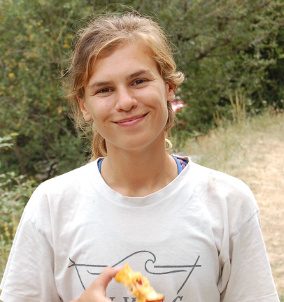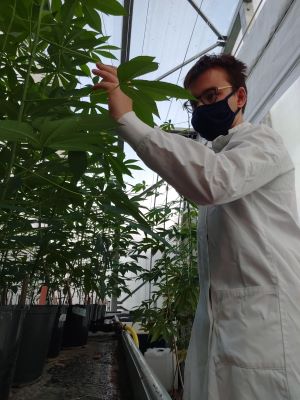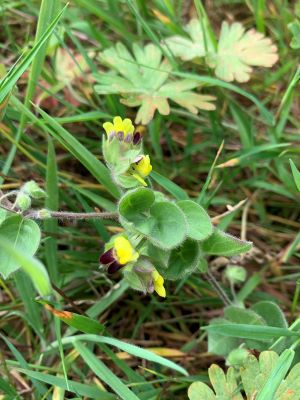Lady Emily Smyth MScR current and past students
Read about current and past MScR students and details of their BCAI funded projects
Meet our current MScR students 2022-2023
Mathilda Digby

Project – Reaching for light: how aboveground competition shapes the 3D architecture of trees
Trees come in all shapes and sizes – from incredibly tall and slender, to short and wide. Among the various drivers that shape tree architecture, a particularly important one is competition for light with neighbouring trees. However, because traditional surveying methods are poorly suited to accurately measuring tree crown architecture, little progress has been made in explaining how differences in overall tree architecture are driven by competition arising from underlying changes in branching patterns.
To address this knowledge gap, this project will leverage recent advances in airborne laser scanning (ALS) that allow us to generate highly detailed 3D reconstructions of a tree crown architecture. By bringing together ALS data from a range of different forest types, this project will shed new light on how competition with neighbours moulds a tree’s crown architecture.
Nathanael Tan

Project – Quantifying hail resistance in crop plants
How, where, and why does hail damage plants? It is a privilege to be awarded the Lady Emily Smyth studentship to answer this question. Despite being regarded as a catastrophic and damaging weather event, the effect of hailstorms on plants is not well studied. If we are to engineer or breed more hail-resistant crops for our uncertain future, we must first understand the strategies available for plants to survive and adapt to such a traumatic event.
I will be taking a unique spin on the problem, studying it from the perspective of mechanical ecology. We have constructed a device that simulates and records the impact of hailstones and will be taking it to the field to test a wide range of plants. By analysing the high-speed video in conjunction with studying the anatomy and morphology of these plants, I hope to home in on the tricks different plants may have developed to cope with hail. We hope to leverage these strategies to help protect the most vulnerable crop plants in the future.
MScR students 2021-2022
The studentships for 2021-2022 were awarded to:
- Zoe Kitching
- Matthew Turk
- Ellen Wright
Zoe Kitching

Project – Identifying genes with the potential to reduce soil erosion in crops using plant model systems
The Lady Emily Smyth studentship, from the Bristol Centre for Agricultural Innovation (BCAI), has given me a fantastic opportunity this year to research genes with the potential to reduce soil erosion in wheat. Soil is an essential non-renewable resource for human life, 99.7% of our calorific intake relies upon it. However, 80% of agricultural lands are experiencing moderate to severe rates of soil erosion which is seriously endangering food security.
One solution is to genetically engineer or breed crops with traits which reduce erosion. Wheat has the greatest land use of any crop on earth, so is a good starting point. My research will use reverse genetic techniques such as, TILLING and deletion lines, and transient protoplast expression analysis to attempt to identify the genes in wheat with the potential to reduce soil erosion. Ideally, this could inform future wheat breeding and genetic engineering.
Matthew Turk

Project – Saving Cassava: A novel gene in a deadly virus
Cassava is a major calorie crop in tropical areas around the world. I am very pleased to have been awarded the Lady Emily Smyth Studentship which will fund my research into two major Cassava viruses (Cassava Brown Streak Virus (CBSV) and Ugandan Cassava Brown Streak Virus (UCBSV)) which threaten the production of this crop and, therefore, food security, in sub-Saharan Africa.
In particular, I will be exploring the unusual Maf/Ham1 protein encoded by these viruses. These proteins are not usually encoded by viruses and, therefore, we hope that furthering our understanding of this protein it might be possible to use this knowledge to combat CBSV/UCBSV and safeguard cassava crops into the future. I aim to further our understanding of this protein by generating a panel of chimeric and mutated infectious clones to study gene function and viral virulence.
Ellen Wright

Project – Pollen: the missing data in floral resource projects
I am currently undertaking a Masters by Research funded by the Lady Emily Smyth Studentship from the Bristol Centre for Agricultural Innovation. I will be researching floral longevity and its relation to pollen availability. I will be undertaking extensive fieldwork to identify the floral longevity of 70 common flowering plant species in the UK. This will then be combined with floral pollen production data to calculate the amount of pollen produced per flower, per 24 hours. This research will fill a large gap currently found within pollinator ecology and floral resource knowledge and may help organisations to design effect schemes to improve pollinator resources on farmland.
